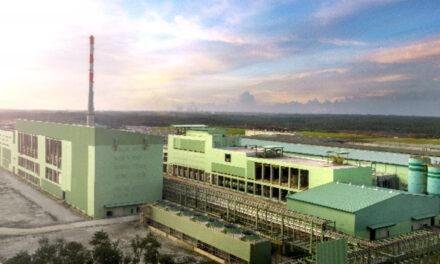 Yarn consumption in Bangladesh’s apparel industry fell sharply in the last half of FY2022-23, despite the country recording an increase in earnings from readymade garment exports.
Yarn consumption in Bangladesh’s apparel industry fell sharply in the last half of FY2022-23, despite the country recording an increase in earnings from readymade garment exports.
Local apparel factories purchased 809,351 tonnes of yarn in the January-June period of last fiscal year, which indicates a 31.55 percent or 373,080 tonnes drop when compared year-on-year, show Bangladesh Textile Mills Association (BTMA) data.
Textile millers and apparel manufacturers said they are receiving fewer orders than capacity due to the ongoing global economic crisis, a ripple effect of the ongoing Russia-Ukraine war. This is why the demand for yarn has declined in the RMG sector.
Explaining why Bangladesh managed to boost earnings despite a low orders, sources at the Bangladesh Garment Manufacturers and Exporters Association (BGMEA) and Bangladesh Knitwear Manufacturers and Exporters Association (BKMEA) said many factories are producing high value clothing items, which is effectively helping the country earn more.
The RMG industry has also increased fabric imports in recent times, which in turn has reduced yarn consumption, they said, adding that despite the jump in export earnings, order volumes from overseas buyers continue to decline steadily.
The BGMEA Utilisation Declaration (UD) permissions, which indicate the export order trend, has been on a steep decline for local apparel exporters, evident by the fact that the first half of 2023 witnessed 1.56 percent year-on-year negative.
Speaking to The Business Post, BTMA President Mohammad Ali Khokon said, “Most of the yarn and fabrics manufacturers had to postpone production for a period daily due to shortage of orders.
“Our operational costs have also gone up because of significant hikes in gas prices. There are simply not enough orders. We are now in severe trouble, and do not know how long we will be able to incur such huge losses.”
Khokon urged the government to cut gas prices taking the textile sector into consideration, as the spot market LNG rate has declined.
Yarn consumption, exports
According to the BTMA, the country has 519 spinning manufacturing mills, where 938 mills are manufacturing fabrics. Most of the spinning mills are manufacturing yarn from cotton for the knitwear manufacturers, while a significant number of mills are also manufacturing fabrics for woven-clothes exporters. However, the RMG industry covers the majority of its woven fabrics demand through imports.
A few years ago, local producers covered nearly 80 percent of knitwear yarn and fabrics demand. But the country witnessed a significant jump in work orders in 2021, and yarn demand jumped as well. So, apparel exporters started increasingly relying on yarn and fabric imports.
Besides, due to the high yarn prices in the local market, knitwear exporters leaned more on imports as the rates were cheaper in India and other countries. This trend continues to this day. To keep up, local millers are increasing their production capacity as well, and they still meet most of the local demand.
BTMA data shows that the country imported 413,684 tonnes of yarn in the January-June period of the last fiscal year, compared to 648,369 tonnes in the same period of FY22. This means yarn imports have declined by 234,685 tonnes or 36.17 percent year-on-year.
On the other hand, during January-June of FY23, Bangladesh’s local textile mills sold 395,667 tonnes of yarn to the export-oriented apparel manufacturers. The figure was 534,062 tonnes when compared year-on-year. That means deemed exports of yarn declined by 138,395 tonnes or 25.91 percent year-on-year.
According to Export Promotion Bureau (EPB) data, in the last six months of FY23, apparel sector earnings jumped by 1.19 percent to $22.97 bn year-on-year. In the first month of FY24, the sector posted a 17.43 percent year-on-year growth to $3.95 bn.
The country earned $13.08 bn through knitwear goods exports in the second half of FY23, while the figure was $12.05 bn in the same period of previous FY. Besides, the sector also posted a 22.24 percent year-on-year growth and earned $2.26 bn in July of FY24.
Fakir Fashion Managing Director Fakir Kamruzzaman Nahid said, “My factory is still getting fewer orders than capacity, and this trend has been continuing since the middle of last year. This factory has one of the costliest operating costs in Bangladesh.”
Echoing the same, Mohammadi Group Managing Director Navidul Huq said, “The volume of orders has improved a bit in recent times, but the situation is far from stable. Our exports in the last fiscal year slipped drastically.”
Meanwhile, explaining the jump in RMG export earnings, BKMEA Vice President Fazlee Shamim Ehsan said, “We are currently manufacturing value-added clothing items, which are helping us in retaining the growth despite lower yarn consumption.
“Besides, we, including myself, are importing a significant volume of fabrics as per the buyers’ requirements, which has led to reduced yarn consumption. However, the overall business situation is not good as the volume of orders declined since the middle of last year.”
BGMEA President Faruque Hassan said, “Buyers had paid us up to $15 per clothing item a few years ago. But we are receiving up to $100 per clothing item in recent years. This is happening because we are now producing high value items. “But in terms of units, our exports have declined.”





















